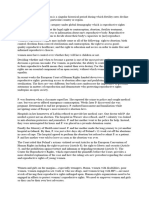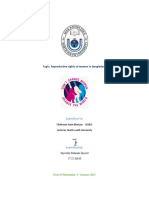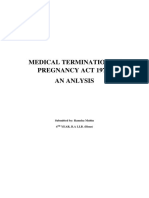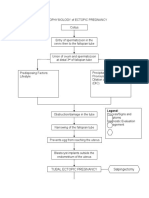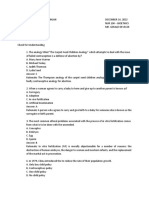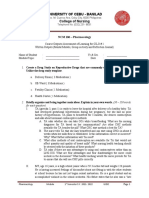0% found this document useful (0 votes)
10 views15 pagesWomen Protection 2
The document discusses women's reproductive rights, emphasizing their importance for gender equality and bodily autonomy, as protected under the Indian Constitution. It outlines various aspects of reproductive rights, including access to healthcare, abortion, and family planning, while also highlighting the socio-legal challenges women face. The paper reviews legal frameworks, such as the Medical Termination of Pregnancy Act and the Pre-Conception and Pre-Natal Diagnostic Techniques Act, that aim to safeguard these rights in India.
Uploaded by
debolinaroy823Copyright
© © All Rights Reserved
We take content rights seriously. If you suspect this is your content, claim it here.
Available Formats
Download as DOCX, PDF, TXT or read online on Scribd
0% found this document useful (0 votes)
10 views15 pagesWomen Protection 2
The document discusses women's reproductive rights, emphasizing their importance for gender equality and bodily autonomy, as protected under the Indian Constitution. It outlines various aspects of reproductive rights, including access to healthcare, abortion, and family planning, while also highlighting the socio-legal challenges women face. The paper reviews legal frameworks, such as the Medical Termination of Pregnancy Act and the Pre-Conception and Pre-Natal Diagnostic Techniques Act, that aim to safeguard these rights in India.
Uploaded by
debolinaroy823Copyright
© © All Rights Reserved
We take content rights seriously. If you suspect this is your content, claim it here.
Available Formats
Download as DOCX, PDF, TXT or read online on Scribd
/ 15















